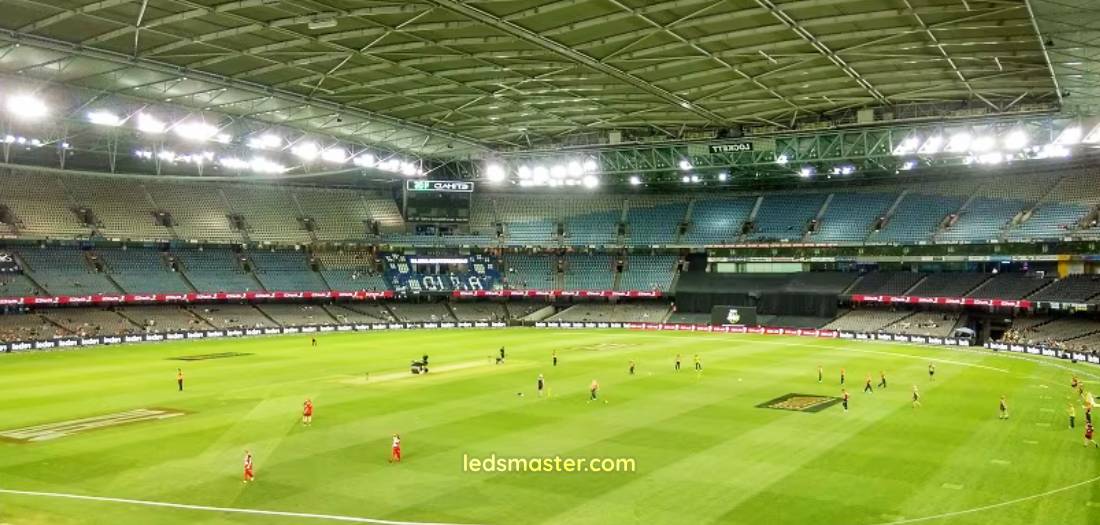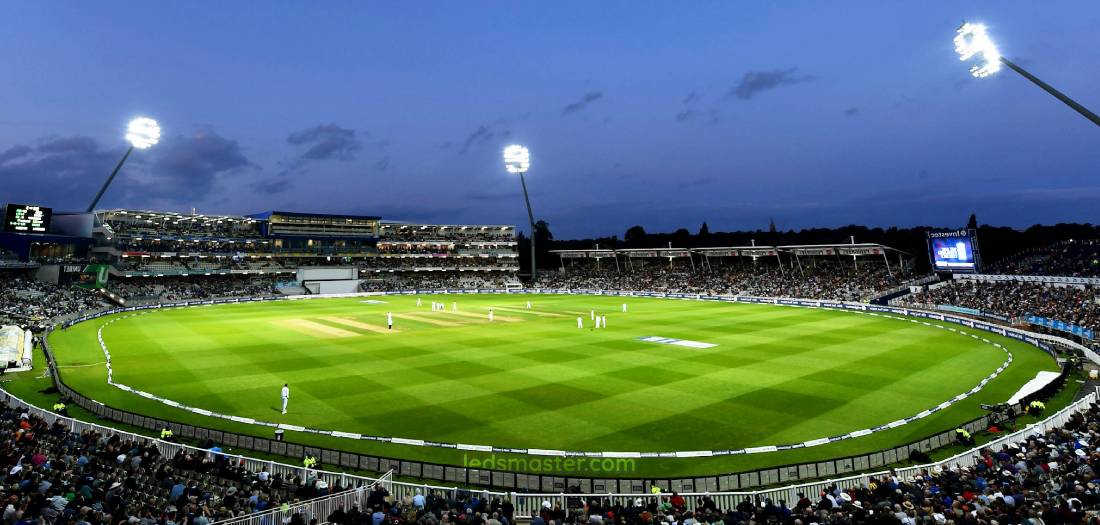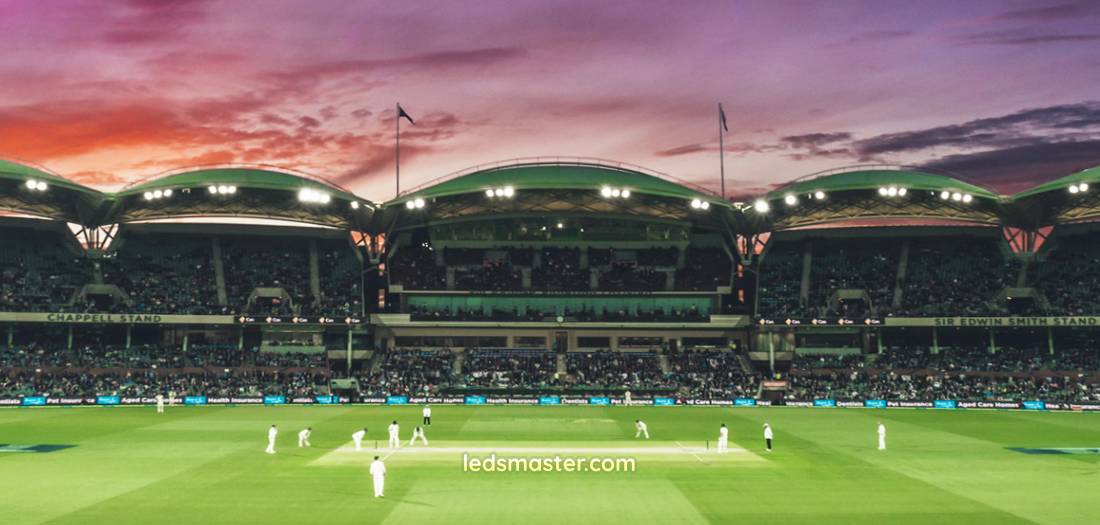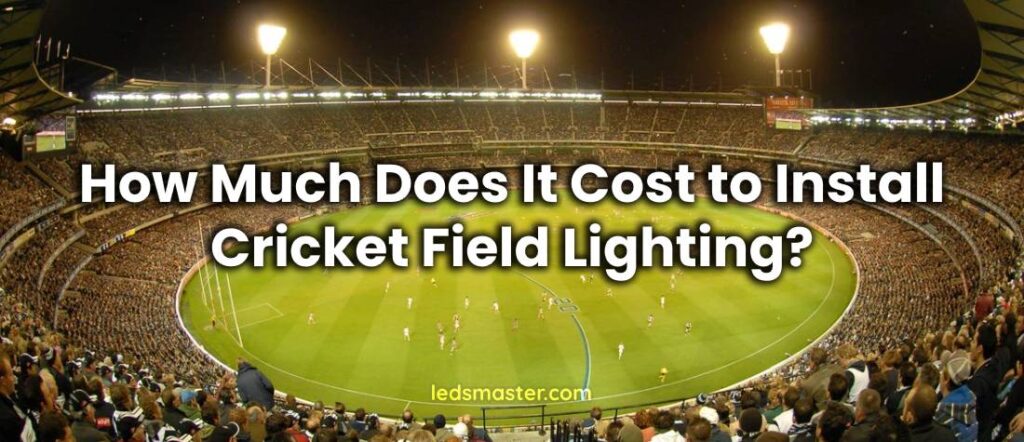Lighting a cricket field is a task that goes beyond simply placing a few poles and bulbs around the ground. The process involves a number of engineering, electrical, and logistical tasks that come together to create a safe and functional playing environment. Whether the field is for professional matches or local club games, proper lighting allows for better visibility and extended playing hours, especially during late afternoons or evening events. Understanding what goes into the cost of installation can help organizers and planners prepare effectively and allocate budgets with greater clarity.
| Cost Item | Estimated Range | Notes |
|---|---|---|
| Cranes (daily rental) | $800 – $2,500 | Used for lifting poles during installation |
| Four-pole system (basic field) | $40,000 – $60,000 | Includes poles and fixture installation |
| Twelve-pole stadium setup | $200,000+ | For large stadiums or competitive venues |
| Trenching per linear foot | $10 – $25 | For underground electrical conduit |
| Power distribution panels and components | $5,000 – $15,000 | Includes circuit breakers, grounding, etc. |
| Solar system cost premium | +20% – 30% | Compared to traditional grid-tied systems |
| Electrical labor (as % of total budget) | 15% – 25% | Based on total installation cost |
| General labor hourly rate | $20 – $40 | Applies to assistants and basic crew |
| Electrician hourly rate | $60 – $120 | Certified and licensed professionals |
| Permit and inspection fees | $500 – $5,000+ | Depends on local regulations and scope |
Table of Contents
TogglePlanning and Site Assessment
Initial Site Evaluation

The starting point for any lighting project is a detailed site evaluation. This involves physical inspection of the cricket ground and its surrounding landscape to determine the constraints and opportunities that will affect the lighting layout. Evaluators check for slope gradients, surface conditions, and accessibility for equipment and vehicles. Particular attention is given to how the field is oriented with respect to the sun’s path, as natural light patterns can affect artificial lighting design, especially during early evening hours.
Site evaluation may also reveal nearby elements that could block or reflect light—trees, stands, fences, or adjacent buildings. These can cause shadows or glare that need to be compensated for in the lighting design. The presence of utility lines or underground services also plays a role, since this could complicate trenching and cabling work. These practical realities shape the placement of poles and routing of electrical infrastructure.
Assessment of Lighting Requirements
One of the most technical aspects of planning is determining the appropriate level of illumination required for the field. Lighting needs are measured in lux, a unit that indicates how much light hits a surface. Lux levels vary greatly depending on the level of play. A casual training ground might operate well at 200–300 lux, while competitive amateur matches might require 500–750 lux. For high-definition broadcast coverage in international stadiums, lighting levels often exceed 1500 lux with uniformity ratios as tight as 0.7.
Professional lighting consultants use photometric software to simulate light spread across the field. These simulations help determine the number of fixtures, their angles, and the spacing between poles. Getting this right during the planning stage reduces the risk of costly revisions later in the process.
Cost of Feasibility Studies and Technical Reports
Feasibility studies often include both technical assessments and financial forecasting. These studies may cost anywhere between $2,000 to $10,000 depending on the complexity of the site and the level of analysis required. Consultants evaluate existing infrastructure, determine lighting feasibility, and sometimes explore future expansion scenarios. Reports generated at this stage often form the basis for municipal or grant funding applications.
Technical documentation generated during this stage usually includes pole layout drawings, electrical schematics, lux level maps, and environmental impact assessments. These documents are not only useful for budgeting, but often required to gain local planning approval.
Geotechnical Investigations
Before any poles are installed, the soil must be tested to determine whether it can support tall lighting structures. A geotechnical survey may involve drilling boreholes or using a cone penetrometer to assess soil strength and composition. Rocky or sandy soil types may require customized foundation designs or deeper excavation. The cost of such investigations generally ranges from $1,500 to $5,000 for a standard field.
If the soil is found to be unstable, mitigation measures such as reinforced concrete bases, soil stabilization, or deeper pole foundations may be proposed. These modifications increase the total cost, but they also prevent future problems such as tilting or pole failure.
Environmental and Zoning Considerations
Another aspect of planning includes checking for environmental regulations and zoning laws. Some areas restrict the installation of tall poles or require dark-sky compliance to limit light pollution. There may be limits on operating hours, especially if the field is near a residential neighborhood. Compliance with these local codes could require the use of directional shielding or lower-wattage lighting, both of which influence the lighting design and material costs.
Permitting fees can range from $500 to $3,000 based on local government requirements. If an environmental impact study is required, particularly in sensitive areas, that could add several thousand dollars more to the early planning expenses.
Budget Planning and Financial Forecasting

Once the site is analyzed and the lighting requirements are established, budget forecasting begins. This includes estimates for equipment, labor, transport, permits, and contingency allowances. Planners also factor in the cost of potential disruptions or delays due to weather, material shortages, or contractor availability.
At this stage, planners usually build a detailed cost model that breaks the project into phases and allocates resources accordingly. Most cricket lighting projects see the planning and assessment stage accounting for roughly 5% to 10% of the total installation cost. For a mid-sized lighting installation project estimated at $200,000, the planning phase might cost between $10,000 to $20,000.
Design Revisions and Optimization
It is common for the initial lighting design to go through one or more revisions based on budget limitations, safety guidelines, or site challenges. These changes may affect the height of poles, number of fixtures, type of luminaires used, or the routing of electrical lines. Each revision involves coordination between designers, engineers, and stakeholders to ensure the changes align with both practical needs and budget constraints.
Revisions may also be driven by technological updates or vendor availability. For example, if a particular lighting system becomes unavailable or too expensive due to market fluctuations, planners may opt for a different system. Each change has a ripple effect on cost, timeline, and installation logistics.
Importance of Early Accuracy
Accurate planning during this stage reduces the chances of mid-project adjustments that could delay work and increase costs. Even something as small as repositioning a pole after construction begins could require re-trenching, pouring new foundations, or rewiring circuits. Early precision can prevent these downstream complications and keep the project timeline intact.
Additionally, a well-executed planning phase makes it easier to secure financing or support from local authorities, as it shows thorough preparation and lower financial risk. For venues that rely on public funding, this can be a deciding factor in receiving approval to move forward.
Types of Lighting Systems
Overview of Lighting Technologies
Choosing the right lighting system is one of the most influential decisions when designing a cricket field setup. The type of system selected affects both the initial capital outlay and the long-term operational expenses. Two primary lighting technologies are widely used for sports venues: metal halide and LED (light-emitting diode) systems. Each has its own advantages, drawbacks, and cost implications that must be considered during the design and budgeting stages.

Metal Halide Lighting
Metal halide fixtures have been a common choice for sports fields for several decades. They provide intense illumination and a relatively high color rendering index (CRI), which is suitable for fast-moving ball sports like cricket. These lights typically require a warm-up period before reaching full brightness and are often mounted on tall poles to provide wide coverage.
One of the key drawbacks of metal halide systems is their energy consumption. They tend to draw more power than modern alternatives, leading to higher electricity costs over time. In addition, the bulbs degrade more quickly, often requiring replacement every two to three years, depending on usage. These ongoing maintenance requirements add to the total lifecycle cost, which can make them less attractive for venues looking to minimize future upkeep.
LED Lighting Systems
LED systems represent a more recent advancement in field lighting technology. Though the upfront costs are usually higher, LEDs offer several advantages that can result in savings over the long term. They consume less power while producing equivalent or greater levels of brightness, often exceeding the performance of older systems in terms of clarity, color accuracy, and directional control.
LEDs also have a much longer service life—typically between 50,000 to 100,000 operating hours—making them more durable and less prone to outages. This helps reduce the frequency of replacements and lowers maintenance effort. Additionally, LEDs turn on instantly without warm-up time, making them suitable for environments where lighting must be activated quickly or adapted in real-time.
Lighting Fixtures and Control Features
The total number of fixtures needed depends on the size of the field and the desired lux level. For example, a community training ground might only need six to eight fixtures mounted on four poles to achieve adequate visibility for recreational use. In contrast, a stadium designed for televised events might require thirty or more high-power fixtures distributed across multiple poles or overhead structures.
Some installations include advanced lighting control systems, which allow operators to adjust brightness levels, schedule usage times, or dim unused sections of the field. These systems may incorporate smart sensors that respond to ambient light or movement, further optimizing energy consumption. Although these features increase the installation cost, they can contribute to lower utility bills and a more adaptive lighting environment over time.
Cost Range and Vendor Selection
The choice between metal halide and LED can lead to different pricing structures. A basic metal halide system for a small field might cost between $30,000 and $50,000, while a comparable LED setup may range from $50,000 to $80,000. For larger grounds or those requiring high-definition lighting, these numbers scale significantly, with LED systems for stadiums sometimes exceeding $200,000 depending on specifications.
Vendors also vary in terms of warranty coverage, product lifespan, and after-sales service, which are all relevant to the total cost equation. Some suppliers offer integrated packages that include design, delivery, and post-installation support, which can simplify the process but may come at a premium.
Balancing Upfront Cost and Long-Term Value
While metal halide systems may appear more affordable at first glance, the long-term operational and maintenance costs often outweigh the initial savings. On the other hand, LED systems involve a higher initial investment but can lead to reduced energy bills, lower maintenance costs, and improved lighting quality for players and spectators alike.
The final decision often depends on the project’s budget, expected frequency of use, and whether the ground is intended for local, amateur, or professional competition. A thorough cost-benefit analysis during the planning phase helps determine which system provides the best value based on intended outcomes.
Pole and Fixture Installation
Structural Role of Lighting Poles
Lighting poles serve as the physical backbone of any cricket field illumination system. They are engineered to support the weight of multiple fixtures and to withstand wind, rain, and seismic activity over time. The material typically used is galvanized steel due to its strength and corrosion resistance, although aluminum poles may be chosen for smaller grounds or where lighter infrastructure is needed. Depending on the size of the field and the type of lighting installed, poles generally range from 12 to 40 meters in height.
Impact of Pole Height on Costs
Taller poles allow for a wider spread of light across the playing surface, which means fewer poles are needed overall. However, increased height brings engineering challenges. A 30-meter pole must be anchored into a deeper and more robust foundation compared to a 12-meter pole. Foundations must account for pole load, wind force, and soil conditions, all of which affect the volume of concrete, rebar, and excavation required. Taller poles may also need custom fabrication or thicker materials, both of which raise material and labor costs.
Installation Equipment and Process
The installation process begins with foundation excavation, typically involving a depth of 1.5 to 3 meters, depending on pole height and soil strength. After base plates and anchor bolts are secured, cranes or hydraulic lifters are brought in to raise and position the poles vertically. Cranes are usually rented on a daily basis, with fees ranging from $800 to $2,500 per day depending on size and local availability. Additional machinery such as boom lifts and concrete mixers may be used during installation.
Once upright, each pole is checked for alignment before lighting fixtures are mounted. Technicians must follow precise design layouts to ensure consistent light coverage and uniformity. Improper aiming or incorrect fixture positioning can lead to uneven lighting, glare, or shadows on the pitch—issues that often require costly corrections.
Cost Drivers in Pole Setup
The total cost of this phase is influenced by the number of poles, their height, and the complexity of the surrounding environment. A basic four-pole system might cost between $40,000 and $60,000 for a training facility, while a twelve-pole setup for a stadium could exceed $200,000. The variability arises from custom engineering needs, crane rentals, fixture weight, and the terrain of the installation site.
Electrical Infrastructure
Routing and Cabling Design
A well-structured electrical layout ensures the lighting system operates safely and efficiently. Cables must be routed from the main power supply to each lighting pole, often requiring trenching and underground conduit installation. These conduits protect wires from physical damage, moisture, and interference. The layout design determines how power is distributed across the field, with each pole receiving a calculated load to avoid overload or power imbalance.
Trenching and Conduit Costs
Trenching involves digging narrow channels along predefined paths and laying conduit systems for electrical cabling. The average trenching cost falls between $10 to $25 per linear foot, depending on soil type, depth, and local regulations. Rocky terrain or areas with existing utilities can increase this figure significantly. Once the trenching is complete, concrete or sand bedding is added before backfilling to protect the conduits.
Power Distribution Systems
Each lighting pole is typically connected to a power distribution panel, which includes circuit breakers, fuses, contactors, and grounding components. These panels allow maintenance teams to isolate specific lighting zones and provide protection against short circuits or electrical faults. Proper grounding ensures safety during rain or lightning storms and is required by code in nearly all jurisdictions. Materials for a complete distribution system can cost between $5,000 and $15,000 depending on the size of the field and type of lighting.
Remote Power and Off-Grid Solutions
Fields located far from urban infrastructure may require extensive upgrades to access grid electricity. In such scenarios, dedicated transformers or even new power lines might need to be installed, significantly raising costs. For projects focused on sustainability or where grid power is unreliable, solar-powered systems with battery storage are an option. These installations carry higher upfront costs—sometimes 20% to 30% more than traditional grid-tied systems—but they can reduce electricity bills over time.
Professional Installation Requirements
Due to the complexity of sports lighting systems, all electrical work must be performed by certified electricians. Labor charges vary widely depending on regional wage rates, but larger projects often include a team comprising lead electricians, apprentices, and inspectors. The cost of electrical labor alone may account for 15% to 25% of the total budget.
Labor and Permits
Skilled Labor and Project Duration
The workforce involved in lighting installations spans several trades. Electricians handle wiring and power setup, while structural crews manage pole erection and foundation work. Engineers and designers oversee layout and compliance, and general laborers assist with site preparation and equipment movement. Project length can vary from several days to multiple weeks depending on the scale, weather conditions, and supply availability. Labor is usually billed by the hour or day, with skilled trades charging higher rates.
Hourly Rates and Regional Variations
Hourly labor rates vary based on location and skill level. General labor might cost $20 to $40 per hour, while licensed electricians may charge between $60 and $120 per hour. Engineers and site supervisors typically command higher fees, particularly for complex or high-profile installations. Delays due to rain or logistical issues can lead to budget overruns, particularly on outdoor sites where weather conditions are unpredictable.
Permit Fees and Approvals
Permit requirements for lighting installation differ by jurisdiction. Typically, permits are needed for electrical work, structural pole erection, trenching, and in some cases, environmental compliance. Fees can range from $500 to over $5,000 depending on local rules and the complexity of the proposed system. Some areas may also require public notices, safety inspections, or neighborhood consultations before work can proceed.
Regulatory Compliance and Documentation
Documentation is often required to demonstrate compliance with safety codes, illumination standards, and energy efficiency guidelines. For facilities hosting night matches or televised events, additional compliance checks related to broadcast lighting standards may apply. Gathering all the necessary paperwork and scheduling inspections is time-consuming, but delays in this area can cause setbacks that impact both labor and equipment rental schedules.
Final Thoughts
Setting up lighting on a cricket field involves a combination of planning, specialized equipment, and skilled labor. Each component contributes to the overall cost, from initial site assessments to long-term maintenance provisions. The choice of lighting technology, pole structure, and electrical setup all influence how much will be spent at each stage. Regional factors and field size also play a role in shaping the budget.
While the upfront cost may seem steep, especially for facilities opting for advanced LED systems or automated lighting controls, the investment often pays off over time through energy savings and reduced upkeep. By understanding the process and evaluating each stage of installation carefully, organizers can make choices that balance performance with financial feasibility.

